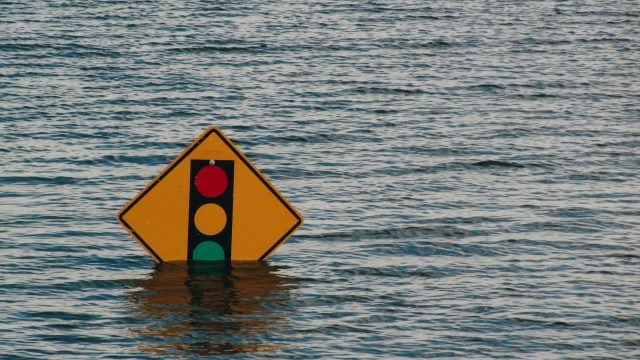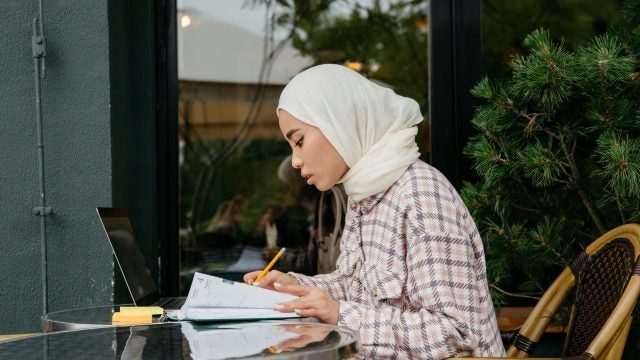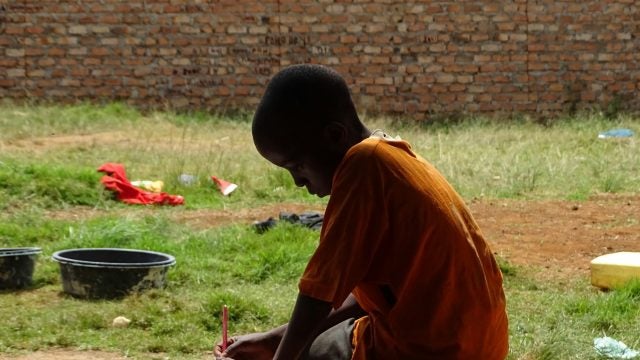
Title: Neither Seen nor Heard: The Invisibility of Children in the Global Politics of Peace, Security, and Responses to COVID-19
The failure of scholars to recognize the agency of children in political spheres matches the failure in practice to engage children when developing programs aimed at responding to their specific experiences in conflict and crisis contexts. Both failures undermine efforts to respond effectively to the unique needs of children and, moreover, to build security and resilience in the societies in which these children live. This is no more evident than in current efforts to respond to the spread of COVID-19 in conflict-affected communities.
Estimates published last year suggest that 1.6 billion children live with the effects of conflict. Research suggests that these children, like adults, engage in activities that both support and undermine efforts to build sustainable peace in conflict-affected communities. Children are protestors, soldiers, community leaders, and advocates for education, peace, and healthcare. They are also heads-of-households, carers, full-time workers, and community volunteers. They are survivors of violence and live with trauma, food and economic insecurity, statelessness, and homelessness. Like adults, their unique experiences are influenced by factors such as their age, gender, health status, ethnicity, and familial situation. In short, from Greta Thunberg to the children protesting the military coup on the streets of Myanmar, children shape and are shaped by the global politics around them.
Children’s experiences do not just help constitute the world in which we live, they also will shape the future. This is the case with the ongoing threat posed by the spread of COVID-19 within conflict-affected communities. The pandemic and its cascading effects make children, especially girls, vulnerable in unique ways. The international community’s failure to support children in these insecure environments not only undermines their security but limits their capacity to contribute to building peaceful and resilient communities now and into the future.
There is a persistent, overwhelming failure to consider children, their experiences, and the roles they play during times of crisis. While children need to be protected and supported— especially in crisis contexts—humanitarian, development, and security organizations that operate in these contexts should engage children if efforts to protect and support them are to be effective. This means children’s experiences, needs, and aspirations—as articulated by the children themselves—must find expression within efforts to build peace and security and respond to the threat posed by the current pandemic. Too often, where children’s needs are considered by organizations working in these environments, it is done with a protectionist lens, without substantially acknowledging children’s agency.
Recognizing Children’s Political Agency
The architects of global politics—be they scholars, soldiers, or political leaders—rarely consider children to be actors in global politics. Where children are considered, they are labelled as victims; they endure rather than design the political world around them.
In the Realist tradition of International Relations, political agency is the purview of the strong: the state and its leadership write the macro-narratives of global politics through the projection and use of material power. Children are not visible, but it is assumed that they are part of the raison d’etre of the state, part of the domestic and private realm in whose interests the state acts. In the Liberal tradition, children are more visible. They are the explicit rights-holders under agreements such as the 1989 UN Convention of the Rights of the Child and recipients of protection measures under collective arrangements such as the UN Security Council’s Children and Armed Conflict thematic agenda.
However, neither of these dominant traditions of International Relations theory take children seriously as political actors. Instead, where they are explicitly theorized they are positioned as politically innocent, vulnerable, naïve, private sphere dwellers, who ideally would be hermetically sealed from the political world. When children do experience the tragedies of politics, it is seen as a failure or breakdown of “normal” politics from which there is a moral obligation to protect them.
Maybe the separation of children from the political world is ideal, as traditional theorizing suggests. But it is not—nor has it ever been—reality.
Children are sometimes political actors whose experiences have political consequences. This is especially true in times of crisis. In these cases, some children choose to be advocates for political change (like Malala Yousefzai). In other cases, their victimization creates lasting political impact (consider the generation of Syrian children who have been denied education). Sometimes their protests and even their violence changes the course of political events, as evidenced in the case against recently-convicted Dominic Ongwen by the International Criminal Court for war crimes and crimes against humanity. He was found guilty of sixty-one charges including the conscription of children to the Lord’s Resistance Army (LRA), the very crime committed against him at the age of ten. In such cases we must confront the gray area between passivity and agency of children in global politics. Children’s agency may be circumscribed by their evolving capacities or mediated by adult “handlers” but their capacity to have positive and negative direct and indirect impacts on politics, as individuals or as generations, is nonetheless undeniable.
COVID-19, Conflict, and Children
Despite this, children’s ability to understand, articulate, and respond to their own needs in crisis contexts is underestimated—and their ability to understand, articulate and contribute to rebuilding the safety and security of their own communities even more so. This has been demonstrated in the current global COVID-19 pandemic, even while children’s vulnerability to a wide array of security threats in conflict-affected environments intensify as impacts of the pandemic take hold.
Social-distancing rules, coupled with increased economic insecurity, have resulted in millions of children no longer being able to access education—including those in the Rohingya refugee camps in Cox’s Bazar after many years of fighting for this right. Child marriage has risen as COVID-19 feeds the economic and security drivers of this form of gender-based violence. The UN Population Fund has estimated an increase of around 13 million child marriages as a result of the pandemic. An increasing number of children require humanitarian assistance in conflict zones as a result of the pandemic, including more than ninety percent of children in Syria. COVID-19 is also accelerating the rates of domestic violence, including against children. Girls in war zones, refugee camps, and other insecure contexts have become further burdened with housework and care labor; as food and other essentials become more scarce, girls are exposed to additional threats as they travel further, queue for longer, or undertake exploitative paid work to get essential supplies. Increasing food insecurity, as a result of the confluence of war and COVID-19, is also taking its toll on the long-term health of children in conflict zones. On top of this, childhood vaccinations have stalled in many countries due to COVID-19 restrictions with more than 80 million children at risk of disease as a result.
Despite these increasing and often unique needs, the international community has directed its attention almost entirely toward the direct threats posed by COVID-19, reorienting commitments and pivoting activities towards the health sector. Even before the pandemic, organizations rarely engaged children when it came to developing, implementing, and evaluating programs—even those intended to respond to the specific needs of children.
To Be Both Seen and Heard
What must occur—now more than ever as children’s vulnerability intensifies—is meaningful engagement with children. This is necessary in order to better know, understand, and thus address the specific needs of children. Perhaps more importantly, unless this occurs children’s capacity to contribute to building peaceful and resilient societies—and leading the future societies we hope for—will be curtailed. Until children are engaged and their critical needs better responded to—until children are both seen and heard—an invaluable resource in building peace and security will be missed. By working with children today, global actors can also develop a better understanding of the unique impacts of COVID-19 on children in conflict and crisis contexts—especially girls—and the priorities children themselves have for their safety and well-being. This will increase the effectiveness of efforts to respond to the needs of children, build self-efficacy and hopefulness among children, and contribute to broader efforts to generate societal security and resilience.
In short, children are not—nor have they ever been—absent from machinations or practices of global politics. Instead, they have been rendered invisible or passive by the theorists and practitioners. This is short-sighted. Children’s experiences, actions, decisions, and ideas can and do shape global politics in big and small ways. They are both today’s and tomorrow’s peacebuilders, belligerents, and community members. Theorists, policymakers, and practitioners of global politics need to better listen to children and draw the connections between “our” world and “theirs.”
. . .
Katrina Lee-Koo is an associate professor in the School of Social Sciences at Monash University. Dr. Lee-Koo’s research focuses upon the experiences of women, youth and children in conflict-affected zones. She is the co-author of Children and Global Conflict (Cambridge, 2015) and the co-editor of Young Women and Leadership (Routledge, 2020).
Eleanor Gordon is a senior lecturer in the School of Social Sciences at Monash University. Dr. Gordon’s research and practitioner experience focus upon building security and justice after conflict and inclusive approaches to peacebuilding. Recently, she is the author of Building Security and Justice after Conflict (Palgrave, 2019).
Image Credit: James Gordon, Wikimedia, Creative Commons License
Recommended Articles

Amid stalled U.S. federal climate engagement and intensifying transatlantic climate risks, subnational diplomacy has emerged as a resilient avenue for cooperation. This article proposes a Transatlantic Subnational Resilience Framework (TSRF)…

The 1997 hijab ban in Türkiye left lasting effects on Muslim women’s psychological, social, and religious identities, shaping their experiences across academia, bureaucracy, and politics. Evidence from interviews…

This article advances the idea that teaching children their mother tongues and learning adjacent national languages offers better prospects for consolidating nation-building and contributing to cultural preservation. Kenya’s case illustrates…